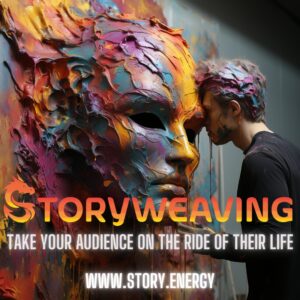

According to my calculations…
Hollywood has completed six major iterations and is now on the 8th “version”.
I don’t pretend to know the complete history of Hollywood in detail.
My job is to play a role in re-creating it.
Here are the first 7 completed stages as I define them:
1. Silent Film Era (1890s-1920s): Movies were entirely silent, with actors’ gestures and expressions conveying the story. Accompanied by live music, often an organ or piano.
2. Golden Age of Hollywood (1930s-1940s): The rise of major film studios and the birth of the iconic star system. Introduction of sound and color, leading to classics like “Gone with the Wind” and “Casablanca.”
3. Post-War Decline (1950s): Television became a household staple, hitting cinema attendance. Hollywood countered with widescreen formats and spectacle films like “Ben-Hur.”
4. New Hollywood (1960s-1970s): The collapse of the studio system. Directors like Scorsese, Coppola, and Spielberg brought more freedom and innovative storytelling. Films tackled mature and controversial themes.
5. Blockbuster Era (1980s-1990s): High-concept films and franchises became prominent. Spielberg’s “Jaws” and Lucas’s “Star Wars” set the stage for massive box-office successes. Special effects became pivotal.
6. Digital Revolution (2000s): The transition from film to digital. Revolutionary advancements in CGI and VFX, leading to visually stunning films like “Avatar.” Streaming services started their rise.
7. Streaming Domination (2010s-2020s): Streaming services like Netflix, Amazon Prime, and Disney+ became dominant. Original content production increased, and binge-watching culture emerged. Traditional cinema faced challenges, while digital platforms thrived.
So then, what’s next?
Hollywood 8.0
Here are some predictions about what this new iteration of Hollywood will consist of…
Hollywood 8: The Immersive Entertainment Era
Overview
The Immersive Entertainment Era represents a paradigm shift in how stories are told and experienced, with a particular emphasis on adaptive content that creates custom experiences for each viewer. Traditional boundaries between various media forms blur, creating a more interactive, personalized, and dynamic entertainment landscape.
1. Most Importantly: BETTER STORIES
– **Storyweaving** Strategy: This website (and YouTube videos, books, podcast, etc) is all about creating stories which are truly transformational in nature. Audiences have HAD IT with bland, soulless, uninspired, rehashings of things that have “worked before”.
– Writers must truly emotionally engage in their process and give up simply being “clever”. It is time for an emotional intelligence revolution in Hollywood.
2. AI-Driven Personalization and Adaptive Content (Our Original Terminology )
– **Dynamic Storytelling**: AI algorithms adjust storylines, pacing, and even outcomes in real-time based on viewer preferences, emotional responses, and viewing history.
– **Personalized Character Development**: Characters evolve differently for each viewer, emphasizing traits or backstories that resonate most with the individual.
– **Adaptive Visuals and Soundscapes**: Visual styles, color palettes, and musical scores adjust to match viewer preferences and enhance emotional engagement.
– **Contextual Adaptation**: Content adapts based on viewing context (time of day, location, device) and viewer’s current mood or stress levels.
– **Custom Boundaries**: Implementations include options for viewers to set boundaries on how much adaptation occurs, preserving artistic integrity while allowing personalization.
3. Virtual Reality (VR) and Augmented Reality (AR) Integration
– **Immersive Storytelling**: Full-length VR movies become mainstream, allowing viewers to experience stories from within.
– **Interactive Narratives**: Viewers can influence storylines, with adaptive systems guiding the experience based on individual interactions.
– **AR Enhanced Reality**: Real-world environments are augmented with personalized digital elements, creating unique hybrid viewing experiences for each user.
4. Multiplatform Storytelling
– **Transmedia Narratives**: Stories unfold across multiple platforms (films, games, social media) simultaneously, with adaptive systems ensuring coherent yet personalized experiences across all mediums.
– **Interactive Streaming**: Streaming platforms offer branching narratives and real-time interaction, with AI managing the complexity of countless potential story variations.
– **Social Viewing Experiences**: Virtual watch parties where each viewer sees a personalized version of the content, with shared elements for discussion.
5. Biotechnology Integration
– **Mood-Responsive Content**: Biofeedback devices adjust content based on viewers’ emotional states, creating a dynamic feedback loop between viewer and content.
– **Sensory Enhancement**: Technologies stimulating smell, touch, and taste complement visual and auditory experiences, adapting to individual sensory preferences and thresholds.
– **Neural Interfaces**: Early-stage direct brain-computer interfaces allow for deeper personalization based on subconscious preferences and responses.
6. More Sustainable Production
– **Virtual Production**: Advanced virtual sets reduce the need for physical locations and travel, with adaptive systems generating personalized environments on-the-fly.
– **AI-Optimized Workflows**: Increased efficiency in production and post-production processes, allowing for the creation of vast libraries of adaptive content elements.
– AI Actors: CGI characters with AI become common, adapting their performances to individual viewers while adhering to predefined ethical guidelines.
7. Globalized Content Creation
– **AI Translation and Cultural Adaptation**: Real-time, culturally nuanced translation and adaptation make content instantly global and personally relevant.
– **Glocalized Productions**: Stories are easily adapted for different cultural contexts, with AI managing nuanced cultural variations for each viewer.
– **Decentralized Studios**: Blockchain and virtual production allow for more decentralized, global collaborations, enabling diverse creators to contribute to adaptive content libraries.
8. New Economic Models
– **Microtransactions**: Pay-per-scene or pay-per-choice models for interactive content, with pricing adapting to individual viewing habits and preferences.
– **NFT Integration**: Unique digital assets and experiences sold as NFTs, with the possibility of personalized NFTs generated by adaptive content systems.
– **Creator Economy**: Direct fan funding and participation in production decisions, with adaptive systems managing complex webs of viewer preferences and creator visions.
9. Challenges and Considerations
– **Digital Divide**: Ensuring access to high-tech, adaptive entertainment across socioeconomic groups.
– **Privacy Concerns**: Balancing deep personalization with data protection and viewer autonomy.
– **Artistic Integrity**: Maintaining core artistic vision while allowing for extensive personalization and adaptation.
– **Regulatory Hurdles**: Adapting laws and regulations to new forms of adaptive content, especially regarding data usage and content responsibility.
– **Mental Health**: Addressing potential issues with hyper-immersive and highly personalized experiences, including addiction and reality distortion.
– **Filter Bubbles**: Ensuring that adaptive content doesn’t limit viewers’ exposure to diverse perspectives and challenging content.
10. Potential Landmark Productions
– First Oscar-winning fully adaptive VR film with millions of unique viewer experiences
– AI-human collaborative blockbuster series that evolves based on global viewer interactions
– Globally simultaneous, culturally adaptive release with personalized storylines for each major market
– First mainstream neural interface entertainment experience offering “dream-like” adaptive narratives
This era promises to redefine the boundaries of entertainment, merging technology and storytelling in unprecedented ways. The challenge for Hollywood will be to embrace these innovations while preserving the core essence of compelling narrative and human connection, all while navigating the complex landscape of personalized, adaptive content.
More info @
1. Silent Film Era (1890s-1920s): Movies were entirely silent, with actors’ gestures and expressions conveying the story. Accompanied by live music, often an organ or piano.
2. Golden Age of Hollywood (1930s-1940s): The rise of major film studios and the birth of the iconic star system. Introduction of sound and color, leading to classics like “Gone with the Wind” and “Casablanca.”
3. Post-War Decline (1950s): Television became a household staple, hitting cinema attendance. Hollywood countered with widescreen formats and spectacle films like “Ben-Hur.”
4. New Hollywood (1960s-1970s): The collapse of the studio system. Directors like Scorsese, Coppola, and Spielberg brought more freedom and innovative storytelling. Films tackled mature and controversial themes.
5. Blockbuster Era (1980s-1990s): High-concept films and franchises became prominent. Spielberg’s “Jaws” and Lucas’s “Star Wars” set the stage for massive box-office successes. Special effects became pivotal.
6. Digital Revolution (2000s): The transition from film to digital. Revolutionary advancements in CGI and VFX, leading to visually stunning films like “Avatar.” Streaming services started their rise.
7. Streaming Domination (2010s-2020s): Streaming services like Netflix, Amazon Prime, and Disney+ became dominant. Original content production increased, and binge-watching culture emerged. Traditional cinema faced challenges, while digital platforms thrived.
More info at www.hollywoodeight.com






No comment yet, add your voice below!